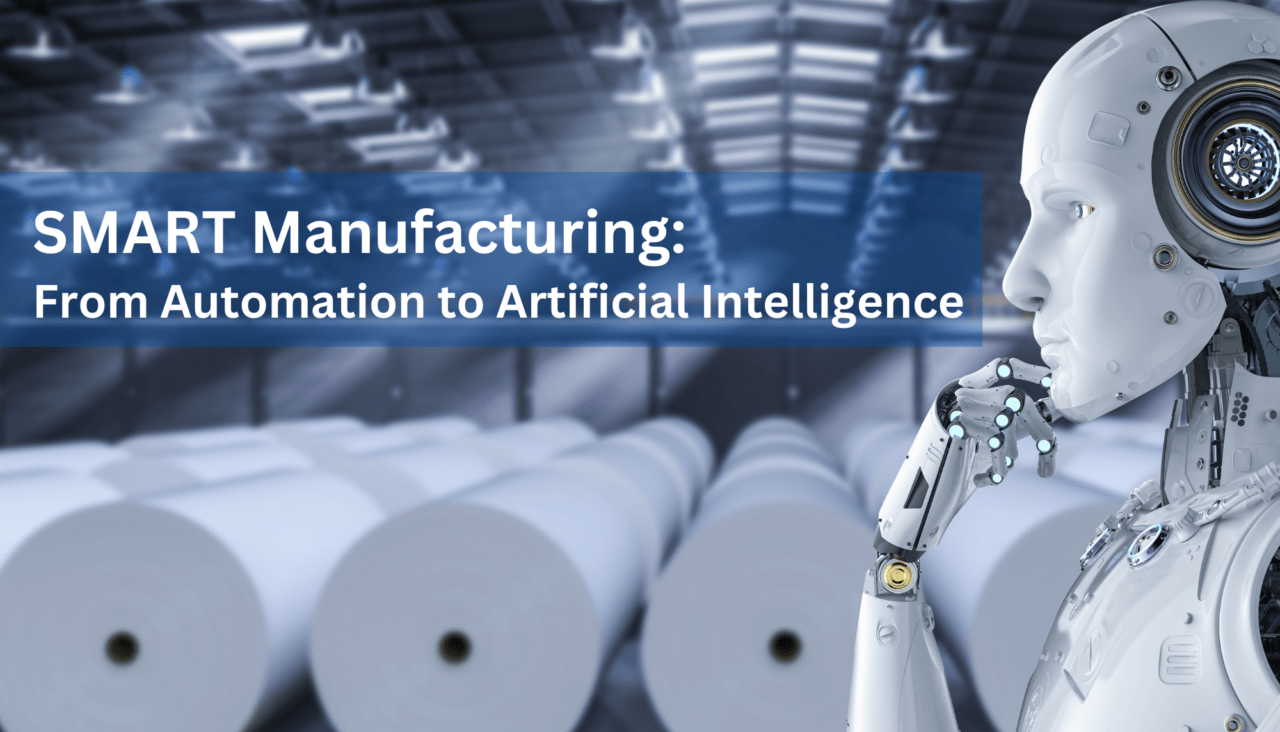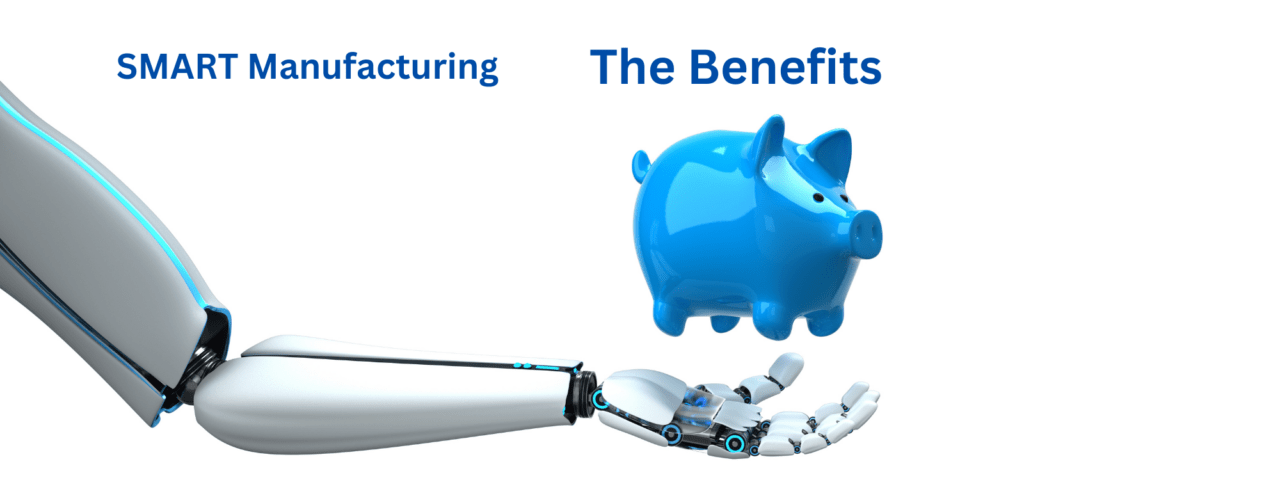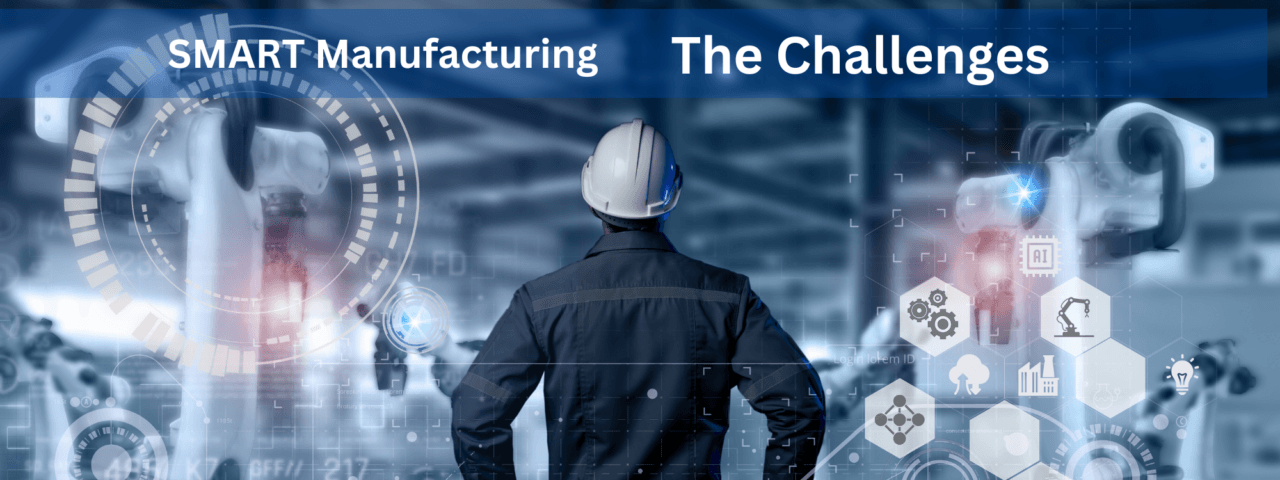
SMART Manufacturing: The Factory of The Future
The manufacturing sector is experiencing significant advancements, with technology driving the transformation so don’t miss it. SMART Manufacturing is emerging as a game-changer as it integrates cutting-edge technologies, data analytics, and automation to optimize production processes, enhance efficiency, and enable intelligent data-driven decisions. SMART Manufacturing holds great potential for AI-driven optimization, cyber-physical systems, and sustainable practices, that will change the future of manufacturing. In this blog, we will look at SMART Manufacturing, including the benefits, challenges, potential that will revolutionize manufacturing.
What is SMART Manufacturing?
Smart manufacturing integrates advanced technologies and data analytics to optimize the entire manufacturing process, improving productivity and efficiency through data-driven insights and predictive analytics. It enables faster innovation and competitive advantage through interconnected technologies. To achieve these results, Smart Manufacturing employs several key components:
- Internet of Things (IoT): Smart manufacturing uses IoT to connect devices, sensors, and machines for real-time monitoring, analysis, and control of operations.
- Big Data and Analytics: SMART Manufacturing uses big data analytics to extract insights from vast amounts of sensor and IoT-generated data, optimizing production processes and enabling predictive maintenance.
- Automation and Robotics: Automation plays a crucial role in SMART Manufacturing. Robots and intelligent machines are deployed to perform repetitive and labor-intensive tasks, leading to increased productivity, improved safety, and enhanced precision.
- Artificial Intelligence (AI): AI algorithms are utilized to process vast amounts of data, identify patterns, and make intelligent decisions. Machine learning and predictive analytics enable proactive maintenance, demand forecasting, and real-time adjustments in manufacturing processes.
- Advanced Manufacturing Technologies: SMART Manufacturing integrates additive manufacturing, augmented reality, virtual reality, and digital twins to expedite innovation and shorten time-to-market through improved design, prototyping, and visualization.

Benefits of SMART Manufacturing
The implementation of SMART Manufacturing has a substantial list of benefits for manufacturers:
- Enhanced Efficiency: By leveraging real-time data and analytics, SMART Manufacturing optimizes production processes, reduces downtime, and minimizes waste. Automation and robotics improve productivity and precision, resulting in higher throughput and better resource utilization.
- Improved Quality: The integration of advanced technologies enables higher precision and quality control. Real-time monitoring and predictive analytics help identify anomalies and deviations, allowing manufacturers to take corrective actions promptly.
- Increased Flexibility and Customization: SMART Manufacturing facilitates agile production by enabling rapid reconfiguration of manufacturing systems and processes. This flexibility allows for customization and personalization of products, meeting the demands of individual customers.
- Cost Reduction: SMART Manufacturing streamlines operations, reduces energy consumption, and minimizes material waste. Predictive maintenance helps avoid costly equipment failures and unplanned downtime. Furthermore, automation reduces labor costs over time.
- Enhanced Safety: Automation and robotics minimize the exposure of human workers to hazardous and strenuous tasks, thus improving workplace safety. Real-time monitoring and analysis help identify potential safety risks and enable proactive measures.

SMART Manufacturing Challenges and Considerations
While SMART Manufacturing offers immense potential, there are several challenges that need to be addressed for successful implementation:
- Data Security and Privacy: As SMART Manufacturing relies on data exchange and connectivity, ensuring the security and privacy of sensitive information becomes crucial. Iron-clad cybersecurity measures and encryption protocols are required to protect against data breaches and unauthorized access.
- Workforce Transformation: The transition to SMART Manufacturing requires a skilled workforce proficient in digital technologies. Training and upskilling programs must be implemented to equip employees with the necessary knowledge and skills to operate and maintain advanced systems.
- Integration and Interoperability: SMART Manufacturing involves the integration of various technologies, software systems, and legacy equipment. Ensuring seamless interoperability between these components can be a complicated task that requires careful planning, complex interfaces, and standardization.
- Initial Investment and ROI: Implementing SMART Manufacturing may require significant upfront investments in infrastructure, technology, and workforce training. Manufacturers need to carefully evaluate the costs and potential returns on investment to justify the adoption of SMART Manufacturing solutions.
- Organizational Culture and Change Management: Embracing SMART Manufacturing often necessitates a cultural shift within organizations. Change management strategies should be employed to address resistance, foster collaboration, and create a culture of innovation and continuous improvement.

The Future of SMART Manufacturing
SMART Manufacturing is poised to revolutionize the manufacturing industry in the near future. As technology continues to evolve, the following changes are expected:
- AI-driven Optimization: Artificial intelligence will play a role in optimizing manufacturing by analyzing vast amounts of data, identifying trends, and making intelligent recommendations. Machine learning algorithms will learn and adapt to improve efficiency and productivity.
- Cyber-Physical Systems: SMART Manufacturing will lead to the development of advanced integration of cyber-physical systems. This integration will enable real-time adjustments and self-optimization in response to changing conditions.
- Digital Twins and Virtual Reality: Digital twins, virtual replicas of physical assets, will become prevalent in SMART Manufacturing. These virtual models will be leveraged for simulations, predictive maintenance, and testing of new designs. Augmented and virtual reality technologies will facilitate collaboration and training.
- Sustainable and Eco-friendly Manufacturing: SMART Manufacturing will contribute to sustainable practices by optimizing resource utilization, reducing waste, and minimizing the environmental impact of manufacturing processes.
Conclusion
SMART Manufacturing is a transformative concept that brings a new era to the manufacturing industry, including sectors like pulp, paper, and nonwovens. Similar to the MAJIQ Elixir® Manufacturing execution systems, Smart Manufacturing leverages technology, automation, and data-driven decision-making to enhance production efficiency, productivity, and quality, while simultaneously reducing costs and improving safety.
Through our experience with MAJIQ-Elixir® Pulp, Paper, and Nonwovens manufacturing projects, we learned the implementation of SMART Manufacturing necessitates addressing various challenges, such as data security, workforce transformation, integration, and change management. As SMART Manufacturing continues to advance, we envision a future where AI-driven optimization, cyber-physical systems, digital twins, and sustainable practices will become commonplace, leading to a revolutionary transformation of the manufacturing landscape.
SMART Manufacturing represents a paradigm shift for the manufacturing community including the pulp, paper and nonwovens industries. Like the MAJIQ Elixir® Manufacturing execution systems, Smart Manufacturing optimizes production through technology, automation, and data-driven decisions, driving efficiency, productivity, and quality while reducing costs and enhancing safety.
As we have experienced in the MAJIQ-Elixir® pulp, paper and nonwovens manufacturing system projects, implementing SMART Manufacturing requires addressing the challenges related to data security, workforce transformation, integration, and change management. As SMART Manufacturing continues to evolve, we can begin to see a future where AI-driven optimization, cyber-physical systems, digital twins, and sustainable practices will become the norm, revolutionizing the manufacturing landscape.


